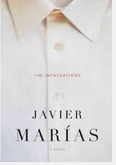Back in 2003 Diarmaid MacCulloch, an Oxford don, published a magisterial book called The Reformation: A History. That book weighed in at 687 pages of text, every one of them a model of clarity, but, as MacCulloch explains in the introduction to the new book, it raised more questions for him. Now the American edition of his subsequent book, Christianity: The First 3000 Years, written to answer those questions, has made its way into the house. As you can see, this one is even longer.
But wait, you say. This is 2011, only 2000 and a few more years into the Common Era (the time that used to be called, in a western-centric way, AD). How does MacCulloch get off using 3000 years in his title? Christianity was deeply rooted in Greek and Jewish philosophy, thought, and liturgy, and MacCulloch spends the first 75 pages of the book tracing those roots, starting at 1000 BCE. He then moves on to the historical Jesus, and the very uncertain beginnings of Christianity. Along the way he describes routes and theologies not taken, like the Nestorian heresy, the Greek roots of words like heresy, and the lengthy efforts to reconcile the divinity and humanity of Christ. (“You’d think they’d have figured that out by now,” my then 10-year-old son commented during a visit to the Vatican a few years ago.) MacCulloch makes the doctrinal, theological, and, critically, political reasons behind why they haven’t very clear.
I’m now almost 300 pages into the book. I’ve just finished MacCulloch’s description of recent archeological discoveries in China that demonstrate how an Eastern version Christianity thrived in China in the fifth, sixth, and seventh centuries, as well as his observations of the peculiar nature of African Christianity, and the impact of the rise of Islam. All this is grouped under a heading “Vanishing Futures: East and South (451-1500). The span of time and space covered in this section is astonishing, and MacCulloch, without any apparent effort, ushers his facts into clarity and order. The book has revelations (though not the religious kind) on every page, and is very fun indeed to read. After all, where else have you seen a description like this:
Hesiod’s Theogony named the first divinity as Chaos; among the divinities who emerged from him, representing the cosmos spawned out of chaos, was Gaia, the Earth. Gaia’s son Ouranos/Uranus (the Sky) incestuously mated with his mother and had twelve children, whom he forced back in Gaia’s womb; Gaia’s youngest son, Kronos/Cronus, castrated his father, Ouranos, before in turn committing incest with his sister and attempting to murder all their children. How unlike the home life of the Christian Trinity.
The BBC ran a TV show exploring MacCullough’s ideas around the time the book was published in the UK. Here’s a link to the trailer.
I admit to reading the book with cell phone at hand, so I can quickly look up various doctrines and events, though the book is generously cross-referenced. Are you reading this book? Finding it fun? Heavy going? A bit of both? What are your favorite lines, descriptions, puns? Discuss in the comments.
Christianity: The First 3000 Years
Diarmaid MacCulloch
Viking Press 2010, 1,161 pages, including notes and index




